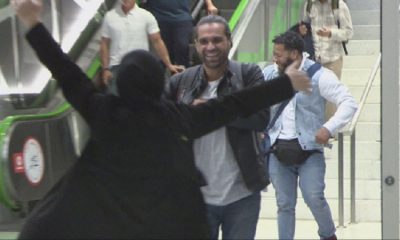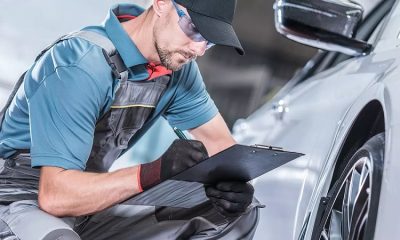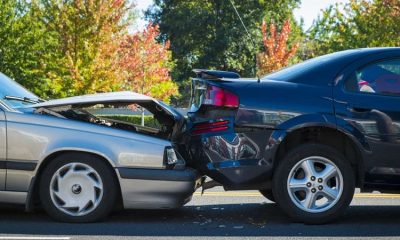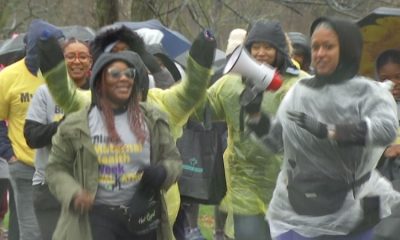Covid-19
COVID-19 reshaping higher education

There are those mornings when some university students wake up with the sunrise. They tick off their to-do list with an early workout, then a quiet walk to a sparsely filled building to get a head start on their work, after that they grab a coffee or tea and just revel in the morning’s stillness.
It’s those types of mornings that Bronwyn Neale, a senior at Texas State University, will miss because of COVID-19’s life changing existence. And it is these types of mornings that Clementine Webre, a freshman at Texas State University, may not get to experience for a long time.
Webre will miss out on a lot more than the serene mornings; she will not get to participate in tailgates, study in the library when she wants to, learn the ins and outs of campus by walking tirelessly from building to building. She will not get to connect with classmates over a project and have a chance to develop friendships outside of class.
Though the college experience is one of a kind, much of it has been put on hold for thousands at Texas State University, it’s the education quality that many students worry about.
“I have a learning disability and I can learn better in person,” Webre expressed her concern, “but I’m not sure if I can do in-person classes because I don’t want to risk my health.”
As a student who had to reconfigure her senior year in high school, Webre said she was very unhappy with the online model. Working from a screen made her education suffer and she even noticed that many people were finding it easier to just copy and paste instead of searching for the answers.
“I’m a stickler for the traditional advent,” Webre said. Traditional is far gone for now and is not expected to make a comeback anytime soon. That notion has been made clear by some Texas State staff who discussed the extensive safety measures the university is preparing.
Most courses will not be in person, at least not full-time. But even if students attend face-to-face lectures, the classrooms cannot host more than 50% of their capacity. Students will have to wear masks, sit six feet apart if possible, and they will have assigned seating to make contact tracing a little easier.
Distancing will not solve the entire issue. Dr. Emilio Carranco, chief medical officer at Texas State University, said that the school will be adding UV light and HEPA air purifiers to their air conditioning units. Cleaning will be done more often using hospital-grade supplies.
Still, no matter how many precautions the school takes to prevent the spread of coronavirus, many students feel discouraged to go back to in-person classes.
Both Neale and her coworker, Jiwoo Park, do not feel prepared to do face-to-face lessons. While Neale feels comfortable learning online, which she said has helped her in her self-paced learning method, she is afraid of contracting and spreading the virus.
Her biggest worry is infecting others because she already contracted COVID-19 once and has a newfound understanding of its dangers. Neale’s friend, Park, was also infected and shares the same concerns.
Even though Park, who was recently diagnosed with ADHD, has really struggled with the online model, she does not believe it is worth the risk.
“If it’s helping stop the spread, let’s do it online,” Park said in an enthusiastic tone. “That’s my whole thing, I don’t want to spread it, I don’t want to put others at risk.”
The statistics show that younger people are less likely to die or experience extremely painful symptoms. But after Park and Neale lightly suffered from the virus, they became adamant about protecting others. They do not want to be the reason that a student, staff or faculty member dies or gets an extreme case of COVID-19.
Since Texas State is not an island standing on its own, university leaders hope that other students act in a similar fashion to Neale and Park. They want to make sure that students who live on and off of campus be careful when going around San Marcos and hope that they wear masks in every public space they visit.
When students do not follow these guidelines, not only could they bring the disease back to their campus, they bring it home to their roommates. Some students, like Webre and Park, feel uncomfortable using assertive language with their roommates and feel they cannot restrict their actions.
“If I’m going to be honest,” Park said, “I don’t feel as safe because we can’t control our roommates. We can’t tell them not to meet their friends and go out – I’m not their mom. So do I isolate myself in my room? It’s a weird limbo feeling. No one knows who they’re contacting, and obviously our roommates have to work, too.”
If a student were to contract the virus, the university does have some systems in place to help.
Texas State University has set up its own team and online system for contact tracing. They are even providing isolated spaces for students who do get infected to quarantine in for 14 days.
Students can go back home if they are able to, but because some of them live far away or do not want to infect their family, the backup option is to get the care needed on campus. They will even have a meal service for those in quarantine to keep the virus at bay. The school is also providing COVID-19 tests on campus in their healthcare center for all staff, faculty and students and can administer several hundred tests per day, if needed.
Indeed, there are many drawbacks in the new way of life for university students. Joshua Gray, a senior at Texas State, said he will miss sneaking in his exercise of the day by walking the unnerving hills on campus. Gray does see a few positive outcomes.
One thing he looks forward to is moving to Mexico City for several months while getting his education.
He also said that driving to campus everyday eventually adds up, so perhaps online courses are one way this college student can save money.
In light of the limited campus accessibility, the university will also implement a few money-saving rules.
They will waive $342 in on-campus fees if a student only takes online and hybrid courses, but will charge an electronic course fee. If a student has at least one face-to-face class, that online course fee will not be charged.
But as the saying goes, the best-laid plans of mice and men often go awry and the vice president for university administration, Dr. Lisa Lloyd, understands this notion.
As she spoke during a higher education panel, Lloyd told the attendees, “it is very important for us to lay out a plan, make it as transparent as possible; one that is fluid and continues to change as we know more about COVID.”
-

 Local News2 weeks ago
Local News2 weeks agoFollowing an ATV accident, a man was rescued from Flint Creek
-

 Local News1 week ago
Local News1 week agoReunited Afghan family in Rochester after almost ten years apart
-

 Local News2 weeks ago
Local News2 weeks agoThe New York measure would alter the way that auto warranty service is paid for
-

 Local News1 week ago
Local News1 week agoResidents in Rochester are irritated by careless driving
-

 Local News1 week ago
Local News1 week agoStrong Hospital has a significant police presence during a search for a man from Livingston County
-

 Local News2 weeks ago
Local News2 weeks agoReactions from RG&E and community supporters to Monroe County’s denial of funding for a public utility study
-

 Local News2 weeks ago
Local News2 weeks agoThe new Senate resolution is ‘encouraging’ for the widow of the Taliban-detained guy from Dansville
-

 Local News1 week ago
Local News1 week agoNumerous people walk to bring attention to Black maternal mortality




